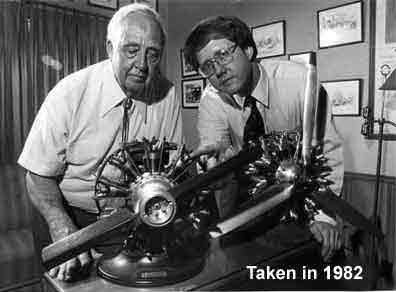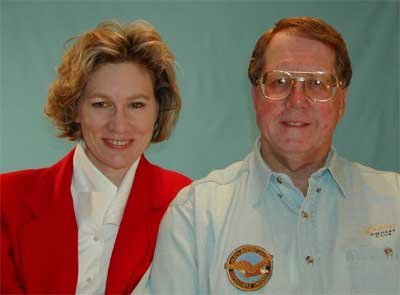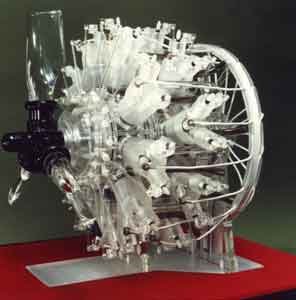|
The Radials In 1936 my father built his 9 cylinder radial engine from the inspiration of an article published in Popular Aviation Magazine. The article had a few photographs, two pages of drawings and two pages of text. The plans for the 9 cylinder have now grown from the original 4 pages to over 200 pages. Over the years, the engineering drawings for his original engine were re-drawn and improved, including : 1. The addition of an oil pressure and scavenge pump 2. Strengthened crankshaft design 3. Improved ignition 4. Improved oil control 5. Addition of tooling drawings to the plans 6. Development of process operation sheets for major parts 7. CDI Electronic ignition 8. Improved compression & oil control rings 9. Using mineral oil for piston ring break-in. The goal of the plans is to make the building of a radial engine within the reach of a builder with a home machine shop and limited machine tools. In 1979, I built the 9 cylinder in my father's home shop. After running this engine and my father's original engine, I realized that both my father and I wanted to build an 18 cylinder double row engine. My father, retired by this time, did the drafting work while I made the parts during the evenings. In 1981, the 18 cylinder engine was completed.
Years later, after my father's death in 1995, I moved the machine shop to Cincinnati, formerly the machine tool capital of the world, and introduced my wife, Peggy, to the joys of owning a Bridgeport Mill. After attending a local airshow, I decided to develop a set of plans and build the double row 14 cylinder engine. The Rotary The rotary engine plans are based on the 1/5 scale model BR-2 by the late Lew Blackmore. These plans are scaled up for a 1/3 size running engine. Various changes have been made to make the engine easier to build, these include a conventional radial cam as well as automobile ignition points.
For years, my father sold the engine plans and worked with model makers from his home in Dallas. Now Peggy and I continue the tradition from our home in Cincinnati. A lot has changed since 1936, but two things have remained the same. It is our goal to provides a strong set of detailed plans that includes all we know about building these engines.
We work hard to maintain personal contact with the builders who use the plans, and hope we can help you with your engine project. My father worked with many engine builders over the years one of the most unusual was Don Shearman In the 1980s, Don Shearman in England produced this double size 18 cylinder entirely in plastic. It was made for the company he worked for. It was motor driven. Tiny lights turned on and off to indicate when the spark plugs were firing.
The Steamboat Engine In 1984, my father vacationed on the Delta Queen steamboat and became fascinated by the California cutoff valve gear. All of the pictures he took did not come out. Working by memory and from a report in an International Correspondence School textbook he was able to build a model of a similar engine. The original engines are a horizontal cross compound with a HP Cylinder. of 26" diameter, the LP Cylinder 52" diameter, the stroke is 10 feet. The engines are rated at 2000 Horsepower at 13 RPM.
|


